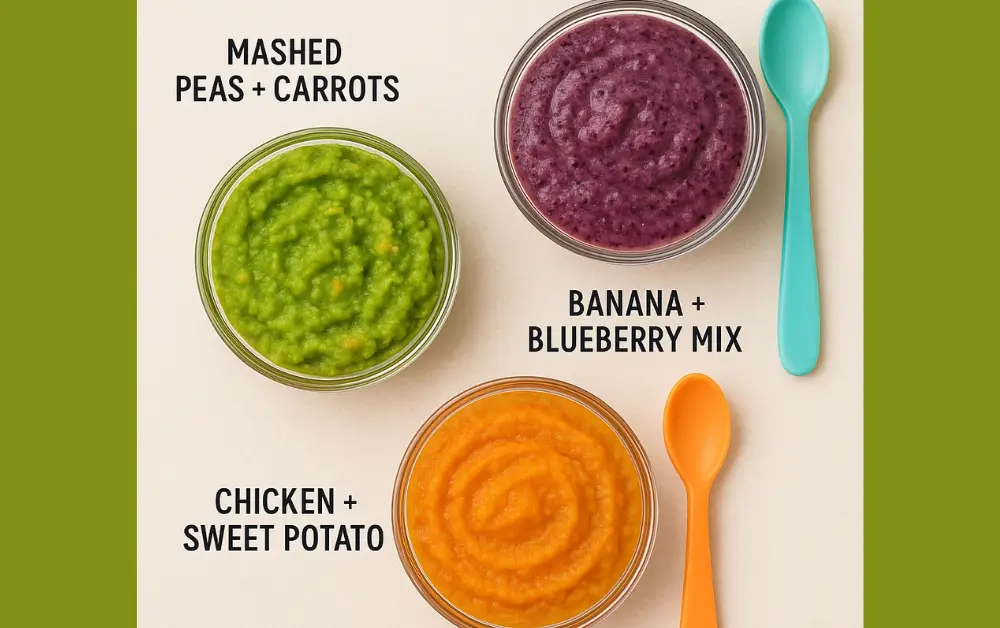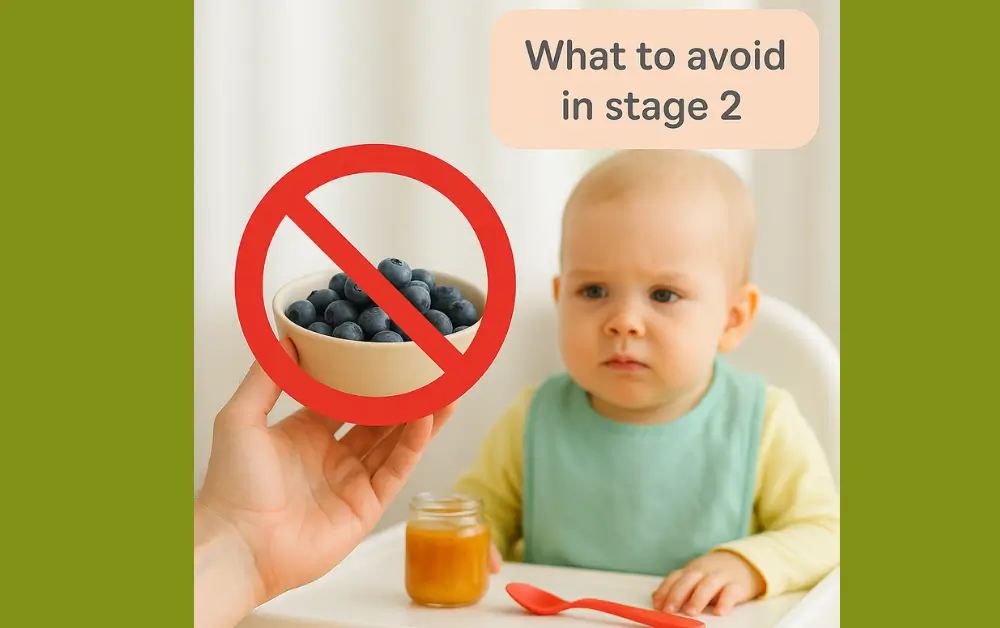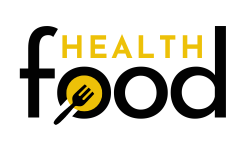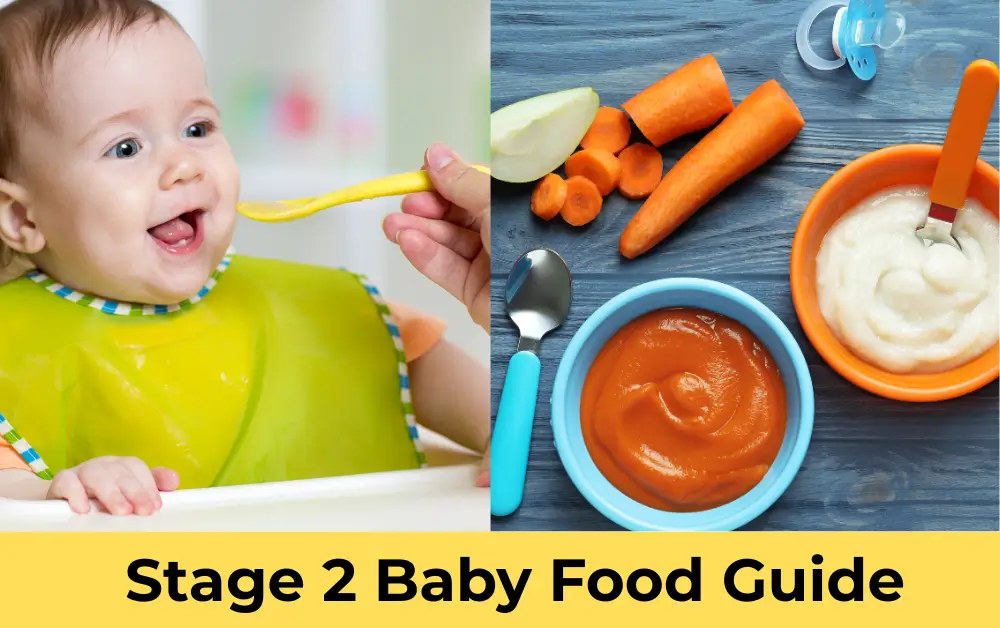“Explore stage 2 baby food recipes your baby will love. Learn how to choose, mix, and serve baby food stage 2 meals safely. Discover now”
When I first tried stage 2 baby food with my little one, I felt both excited and unsure. The jars looked great, but I had so many questions. Was this the right time? What if my baby didn’t like it?
Stage 2 baby food is a big step in your baby’s journey. It’s thicker, tastier, and comes in fun blends. From Gerber baby food stage 2 to homemade mixes, there are so many choices.
In this article, I’ll share what I’ve learned. You’ll find tips, easy recipes, and real advice. Let’s take this stage together—one spoon at a time.
🟩 What Is Stage 2 Baby Food?

🟩 What Is Stage 2 Baby Food?
Stage 2 baby food is a thicker, smoother food made for babies who have passed stage 1. It blends two or more ingredients into one puree. It’s great for babies who are ready for new textures and flavors.
Snippet Answer: Stage 2 baby food is soft, mixed puree with more texture, made for babies around 6–8 months old.
Unlike stage 1, which is thin and plain, baby food stage 2 has more variety. It often includes fruit, veggies, grains, or meats in one jar. You’ll notice it feels fuller and more filling too.
Stage 2 baby food also comes in bigger portions. That’s because your baby is growing and eating more. I remember my baby finishing two jars of Gerber baby food stage 2 in one meal—it was a big win!
Snippet Answer: Stage 2 baby food comes in larger servings to meet your baby’s growing needs.
You can buy Plum Organics stage 2 baby food or make it at home. I made banana and oats puree at home and saved time using store-bought ones during busy days. Both worked great!
Snippet Answer: You can use homemade or store-bought stage 2 baby food, like Gerber or Plum Organics, based on your routine.
If your baby is ready for more than just plain tastes, this is the right stage. Stage 2 baby food helps your baby explore and enjoy real food—slowly and safely.
🟩 When Should You Start Stage 2 Baby Food?
I remember feeling a little nervous before giving my baby stage 2 baby food for the first time. She had just started to enjoy thin purees, but I wasn’t sure if she was ready for thicker ones. Like many new parents, I had questions—lots of them.
Most babies are ready for baby food stage 2 between 6 to 8 months. That’s the sweet spot when they’re eating well and showing signs of curiosity with food. If your baby opens their mouth when a spoon comes near or seems to want more than thin purees, that’s a great sign.
Here’s what I noticed before starting stage 2:
- My baby could sit with support.
- She finished full stage 1 jars easily.
- She looked excited about food on my plate.
- She didn’t push the food out with her tongue anymore.
These signs told me she was ready. Still, I double-checked with our pediatrician, and she gave me the green light. It helped me feel confident and relaxed. If you’re unsure, asking your doctor is always a good idea.
I started slowly—with just one jar of Gerber baby food stage 2 at lunch. The apple and pear blend was her favorite. At first, she made a funny face at the texture, but after a few spoonfuls, she couldn’t get enough. Watching her try new flavors was pure joy.
You don’t need to rush. Some babies need more time in stage 1, and that’s perfectly fine. Starting stage 2 baby food is about learning your baby’s pace. Trust your gut and your baby’s cues.
Whether you’re offering homemade blends or Plum Organics stage 2 baby food, the key is to stay patient. Introduce new textures gently, one spoon at a time. This stage is a bridge—connecting soft first foods to more adventurous eating.
🟩 What Foods Are Included in Stage 2 Baby Food?
Stage 2 baby food is thicker and has more flavors than stage 1. It usually mixes fruits, veggies, grains, and meats. This helps babies try new tastes while still being easy to eat.
Here are common foods in baby food stage 2:
- Pureed meats like chicken or beef with veggies
- Grains mixed with fruit, like oatmeal and banana
- Fruit and veggie blends like sweet potato and carrot
- Single foods with a thicker texture
You can buy Gerber baby food stage 2 or Plum Organics stage 2 baby food. Both are safe and easy. You can also make your own blends at home for freshness and variety.
Keep the food smooth but thicker than stage 1. This helps your baby get ready for more solid foods. Always watch for any allergic reactions.
🟩 My Personal Tips for Introducing Stage 2 Baby Food
When I started giving my baby stage 2 baby food, I took it slow. Introducing new textures was a bit tricky at first. I found that patience really helped.
At first, I used a small spoon to make sure the bites were just right. Too big, and my baby would fuss. Small spoonfuls made the experience smooth and happy.
I also learned to watch for my baby’s reactions closely. Sometimes, she’d make a funny face or turn away. Other times, she’d open wide, eager for more. Listening to her cues helped me know when to stop or try again later.
One challenge was introducing mixed flavors. Some blends were hits, like sweet potato with carrot, but others, like peas with meat, took more tries. Mixing familiar favorites with new ones made the transition easier for both of us.
I used both homemade recipes and trusted brands like Gerber baby food stage 2 and Plum Organics stage 2 baby food. On busy days, store-bought jars were lifesavers. At home, I loved making fresh blends—it felt personal and special.
Remember, every baby is different. What worked for mine might not work for yours, and that’s okay. Trust your instincts, be patient, and enjoy watching your little one explore new tastes.
🟩 Stage 2 Baby Food Recipes You Can Try at Home

🟩 Stage 2 Baby Food Recipes You Can Try at Home
Making your own stage 2 baby food recipes is simple and rewarding. You control what goes in, ensuring fresh and healthy meals for your baby. Here are some easy recipes you can try, with full ingredient lists and clear steps.
1. Sweet Potato and Carrot Puree
Ingredients:
- 1 medium sweet potato
- 2 medium carrots
- Water or breast milk (for thinning if needed)
Instructions:
- Peel the sweet potato and carrots.
- Cut into small chunks for even cooking.
- Steam the pieces for about 15 minutes, or until soft.
- Blend the steamed sweet potato and carrots together until smooth but thick.
- Add water or breast milk if you want a thinner texture.
- Cool before serving.
This puree is rich in vitamins and has a natural sweetness that babies love. It’s smooth but thicker than stage 1, perfect for your growing baby.
2. Banana and Avocado Mash
Ingredients:
- 1 ripe banana
- ½ ripe avocado
Instructions:
- Peel the banana and scoop out the avocado flesh.
- Mash both together with a fork until creamy and slightly chunky.
- Serve immediately or cover and refrigerate for up to 24 hours.
This recipe is creamy and full of healthy fats. It’s great for babies starting to explore new flavors and textures.
3. Oatmeal and Pear Blend
Ingredients:
- 2 tablespoons rolled oats
- 1 ripe pear
- Water or formula (to cook oats)
Instructions:
- Peel and core the pear, then cut into small pieces.
- Cook the oats in water or formula until soft (about 5 minutes).
- Steam the pear pieces for 5 minutes until tender.
- Blend the cooked oats and steamed pear until smooth with a bit of water or formula to reach desired thickness.
- Let cool before feeding.
This recipe adds gentle grains to fruit, introducing new textures and flavors that help your baby’s digestion.
Safety and Storage Tips
Always cool foods before feeding your baby. Store leftovers in airtight containers. Use refrigerated food within 48 hours. For freezing, portion the food into small containers or ice cube trays. Thaw fully in the fridge before serving.
If you’re short on time, you can also try trusted brands like Gerber baby food stage 2 or Plum Organics stage 2 baby food. They offer safe, tasty options that fit well into a busy schedule.
Trying homemade stage 2 baby food recipes gave me confidence. It was fun seeing my baby enjoy fresh flavors while knowing exactly what was in her food. Give these recipes a try and watch your little one explore new tastes!
🟩 Store-Bought vs. Homemade: What I Learned
Short answer : Both store-bought and homemade stage 2 baby food have pros and cons. I used both, depending on time, budget, and convenience.
When I first started feeding my baby stage 2 baby food, I thought I’d go 100% homemade. But life got in the way—some days were smooth, and others were chaos. I learned that both homemade and store-bought baby food have their place, and that’s okay.
Homemade food felt personal. I knew every ingredient, and I could adjust textures based on what my baby liked. Plus, it saved money in the long run. A single sweet potato made several meals! But prep took time—washing, chopping, steaming, blending. On days when I was tired or rushed, it just wasn’t realistic.
Snippet-worthy insight: Homemade baby food lets you control ingredients and save money, but it takes time and effort.
That’s when Gerber baby food stage 2 and Plum Organics stage 2 baby food saved the day. These jars were ready to go, and they passed the baby taste test. Gerber’s apple and chicken blend was a big hit. Plum Organics had some fun veggie combos that I wouldn’t have thought to try at home.
Snippet insight: Store-bought baby food like Gerber or Plum Organics is quick, safe, and baby-approved—perfect for busy days.
One thing I learned fast? Check labels. I avoided anything with added sugar, salt, or preservatives. Most stage 2 baby food jars were clean, but it’s still good to double-check. If I couldn’t pronounce an ingredient, I skipped it.
Quick takeaway: Read baby food labels to ensure ingredients are simple and baby-safe.
From a cost angle, making food at home was cheaper. But when I found store-bought options on sale or bought them in bulk, they were affordable too. I often mixed both. A homemade mash in the morning, a Plum Organics stage 2 baby food pouch at lunch—it balanced my day.
Budget tip: Combine homemade and store-bought stage 2 baby food to save time and money without sacrificing quality.
Looking back, using both options helped me stay sane. It wasn’t about being perfect—it was about doing what worked for my baby and my life. If you’re feeling torn, know that there’s no right or wrong. Just listen to your baby and yourself.
Final note: Whether you choose homemade or store-bought stage 2 baby food, trust your instincts and find a rhythm that works for your family.
🟦 What to Avoid in Stage 2 Baby Food

🟦 What to Avoid in Stage 2 Baby Food
Short answer : Avoid honey, whole nuts, added salt, sugar, and hard-to-digest ingredients in stage 2 baby food. Read labels carefully—even trusted brands can surprise you.
When I first started giving my daughter stage 2 baby food, I assumed all baby food was safe. But after a few close calls (and one late-night Google spiral), I learned what not to feed her the hard way.
🚫 Foods to Never Include
One of the first things my pediatrician told me? “No honey before age one.” It sounds harmless, but honey can carry bacteria that cause infant botulism—a serious illness. That was a big wake-up call for me.
Snippet insight: Honey is dangerous for babies under one due to the risk of botulism—never include it in stage 2 baby food.
Then there were the foods I didn’t even think twice about—like chopped nuts or nut butters. I once added a tiny dab of almond butter to mashed banana. My baby gagged, and I panicked. Turns out, whole nuts or thick nut pastes can be choking hazards, even in small amounts.
Quick takeaway: Avoid whole nuts or thick nut butters—they can cause choking in babies eating stage 2 baby food.
Also, steer clear of added salt and sugar. Some early mistakes I made involved store-bought items that seemed baby-friendly but weren’t. I now double-check labels on everything—even Gerber baby food stage 2—to make sure the ingredients are clean and simple.
Helpful tip: Baby food stage 2 should never contain added salt, sugar, or artificial preservatives—read labels every time.
🧾 Label Lessons I Wish I Knew Sooner
One of the first jars I picked up had ingredients like “ascorbic acid” and “natural flavors.” I had no idea what those were. Now, I follow one simple rule: If I can’t pronounce it, I don’t feed it to my baby.
Even trusted names like Plum Organics stage 2 baby food and Gerber baby food stage 2 are mostly safe—but it’s always worth a quick scan of the label. I aim for ingredients I could find in my own kitchen: “sweet potato, water” is a yes. “Modified corn starch” is a no.
Snippet-worthy tip: Choose baby food with simple, whole ingredients—skip anything you wouldn’t use in your own kitchen.
Watch for fillers and added thickeners, too. Some store-bought jars use rice flour or tapioca starch to bulk up the food. These aren’t unsafe, but they’re not very nutritious either. I try to keep it real—with actual veggies, fruits, grains, and nothing extra.
🧠 Learn From My Mistakes
In my early days, I once gave my baby a small chunk of cooked egg in a mashed veggie mix. She gagged and looked shocked—it scared us both. I learned then that stage 2 baby food should still be smooth and spoonable, not lumpy or chunky.
Keep stage 2 baby food smooth and mashable—avoid large or firm chunks until your baby has better chewing control.
Also, don’t assume “organic” means safe. I love Plum Organics stage 2 baby food, but I still check for things like citrus, strawberries, or spinach—these are healthy, but can sometimes cause mild allergic reactions or gas. I now introduce new foods one at a time so I can track what works and what doesn’t.
Pro tip: Even healthy foods can cause mild reactions—introduce stage 2 baby food ingredients one at a time.
🟩 How to Transition from Stage 2 to Stage 3
Short answer :
You can move from stage 2 to stage 3 baby food when your baby shows interest in self-feeding, handles thicker textures, and has a few teeth—usually around 8–10 months. Start slow, watch their cues, and increase texture gradually.
I still remember the day my baby grabbed the spoon right out of my hand—it was messy, hilarious, and a clear sign: she was ready for more independence. That moment kicked off our shift from stage 2 baby food to stage 3. It didn’t happen overnight, but with a little patience (and a lot of bibs), we got there.
🧠 Signs Your Baby Is Ready for Stage 3
Here’s what told me it was time to level up:
- She could mash food with her gums (no teeth needed, really).
- Stage 2 textures weren’t enough—she wanted more bite.
- She started picking up tiny bits of food and trying to feed herself.
- The spoon became a toy… and then a weapon. Time for finger foods!
Snippet tip:
Your baby is ready for stage 3 food when they show interest in finger foods, can sit unassisted, and manage thicker textures.
I also noticed that my daughter was more curious about what we were eating. She’d stare at my plate like it held treasure. So I took the hint and introduced stage 3 baby food with soft chunks and small pasta pieces. Spoiler: she loved it.
🕰️ Our Real-Life Transition Timeline
We started baby food stage 2 at around 6 months, and by 9 months, we were blending in stage 3 foods. But I didn’t rush. It was more like a slow fade—think playlists transitioning from lullabies to bouncy nursery rhymes.
Week by week, I’d make small changes:
- Week 1: Mixed chunkier textures into her usual stage 2 baby food.
- Week 2: Offered mashed veggies and soft grains on the side.
- Week 3: Let her hold small pieces of banana or overcooked pasta.
- Week 4: Gave her full stage 3 baby food jars or chunkier homemade meals.
Snippet answer:
Start the stage 2 to 3 baby food transition around 8–10 months, slowly adding chunkier textures while watching for signs of readiness.
🥣 Tips for Gradual Texture Changes
Think of stage 2 as smooth jazz, and stage 3 as acoustic rock—still gentle, but with more rhythm and texture. To help the shift:
- Mix textures: Add tiny soft chunks to familiar stage 2 purees. Think mashed peas in oatmeal or diced pear in banana mash.
- Use a fork, not a blender: Light mashing with a fork makes food less smooth, easing the change.
- Serve finger foods: Steamed carrots, soft avocado pieces, or tiny rice balls encourage self-feeding.
AEO snippet:
To ease into stage 3 baby food, mix soft chunks into stage 2 meals and introduce simple finger foods like avocado, banana, and cooked veggies.
It wasn’t always smooth sailing. Some textures made her gag, and that freaked me out at first. But my pediatrician reassured me—it’s normal. Babies need time to figure out chewing and swallowing thicker foods.
💡 Final Thoughts: Trust the Process
Every baby has their own pace. Some are ready for Gerber baby food stage 3 early, others prefer sticking to stage 2 baby food a little longer. I learned to trust my gut and my baby’s cues. Some days she loved the new textures, and other days? Total rejection. And that’s okay.
Snippet answer:
The key to a smooth transition from stage 2 to stage 3 baby food is patience, gentle texture shifts, and letting your baby lead the way.
So whether you’re mashing your own meals or trying out Plum Organics stage 2 baby food before upgrading, take your time. This isn’t a race—it’s a journey. And watching your baby explore real food, bit by bit, is one of the best parts.
✅ Conclusion – Make Mealtime Easy with the Right Stage 2 Baby Food
Feeding your baby doesn’t have to be hard.
With the right stage 2 baby food, you can offer healthy, soft meals your baby will enjoy.
These blends help your baby grow and learn to eat well.
Choose foods with safe textures and real ingredients.
Start slow, watch for allergies, and mix flavors once your baby is ready.
Always talk to your doctor before making big changes.
This stage is a big step.
But with the right food, it can be simple, safe, and fun.
Your baby’s happy tummy will thank you!
🟦 FAQs: About Stage 2 Baby Food

🟦 FAQs: About Stage 2 Baby Food
What age is stage 2 baby food for?
Most babies start stage 2 baby food around 6 to 8 months old. By this age, they can sit with support and show interest in new textures. Always check with your pediatrician if you’re unsure.
Can I mix stage 2 baby food flavors?
Yes—mixing flavors is a great way to build your baby’s palate. Try blending two stage 2 purees, such as sweet potato with apple or banana with avocado. Start with small amounts so your baby can get used to each taste.
Is it okay to give stage 2 food at 5 months?
It’s best to wait until at least 6 months before moving to stage 2 baby food. Before that, infants need thinner, single-ingredient purees. If your baby is younger than 6 months but eager to try, talk to your doctor first.
What’s the difference between stage 1 and stage 2 baby food?
Stage 1 purees are thin and single-ingredient, like plain carrot or pear. Stage 2 purees are thicker and mix two or more ingredients, such as carrot-apple or chicken-rice blends. The added texture helps babies learn to chew with their gums.
How many jars of stage 2 baby food per day?
Most babies eat 2 to 3 jars of baby food stage 2 each day, split across two or three meals. Watch your baby’s hunger cues—some may need more, some less. Supplement with formula or breast milk as usual.

